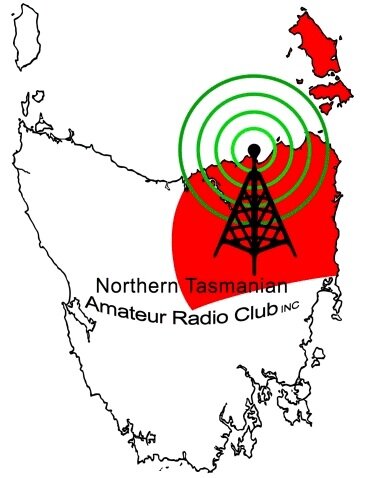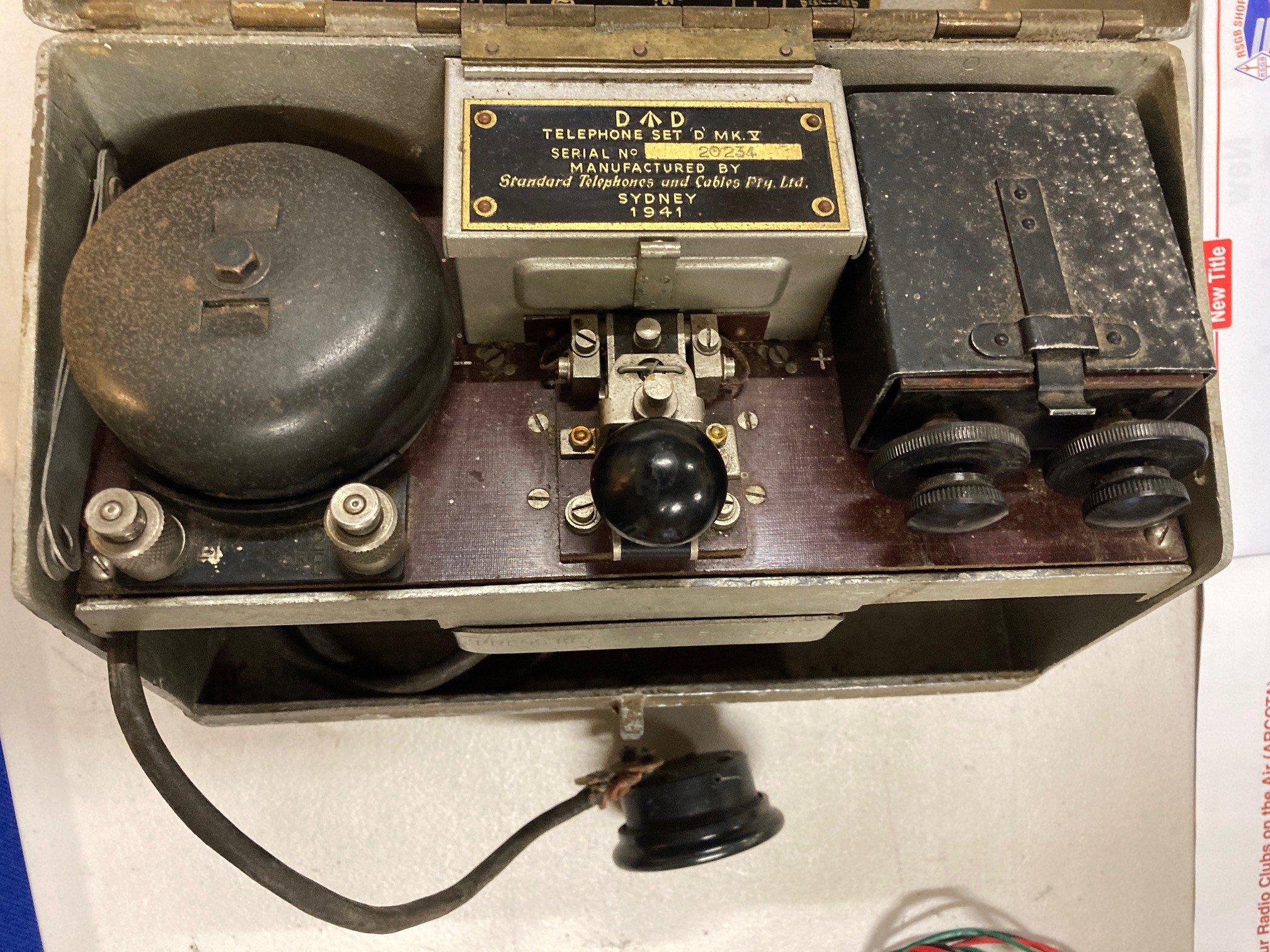Broadcast - 17 March 2024
A little bird told me that one of our members, Stephen VK7SVG, recently had an article published in the March edition of Silicon Chip, in the Serviceman’s Log section entitled “The old days of TV antennas”. So as soon as my copy arrived that section was quickly turned to. It is an interesting article on antenna installation and servicing. One service call was for an installation that had previously grown in size over the years. Unfortunately it was not really “World’s Best Practice” or maybe it was lack of knowledge or just leave it to the next guy to fix! In this case Stephen was the next guy to fault find and receive an electric shocks where you might not expect one.
But apart from that I am sure I have never been in a room with sixteen 26-inch cathode ray tube television sets, let alone all displaying teletext…. Do you remember Teletext?? Thank you Stephen, we now know who S.G. from Tasmania could be.
Last Wednesday evening had a very pleasant surprise, three new faces turned up for a visit to the club technical night. Adam and Vicky arrived just after the doors were opened with Denis arriving shortly thereafter. Hopefully they all felt welcomed and included in the night. It did see our last copy of “Your Entry Into Amateur Radio” walk out the door though. Luckily Vicky and Adam had purchased a copy while on a recent trip to Hobart, from a certain Caltex Service Station at Moonah, thank you Clayton for saving our embarrassment over our low stock level. Feel free to visit us again.
Later in the tech night Ross VK7ALH, arrived with a couple of items.
Firstly a “Megger BR3 Bridge Megger Testing Set”, still in its original dove-tailed wooden case. The case was essential for protection during field use. The unit is still in mint condition and is probably circa 1970s.
It is a highly accurate high-voltage bridge. Designed to locate cable and outer sheath faults, especially useful when fault finding on underground cables.
These instruments are to be treated with respect, not only because it is a fine piece of test equipment but when it is actually testing there can be upwards of 500 Volt DC present on the external connection terminals!
As the instrument name implies it is capable of performing different test functions.
There is effectively five states the instrument can be in depending on the function selector.
“Insulation” position - This can check cable conductors for insulation resistance measured in Meg Ohms at 500 Volt DC. The leakage / breakdown results are displayed on a meter scale. This testing is especially useful for underground cables.
“Discharge” position – this one is most important, you should always go back to this one for a while after testing insulation breakdown. Why? Well when testing long cable pairs they behave as a capacitor that has just been charged up to 500 Volts! If the insulation resistance is in good condition and not leaky, then trust me they can stay at a high potential for quite a while! Discharge position does as it says, dissipates the stored energy in the conductors under test.
The other three functions are “Bridge”, “Varley” and “Murray” test modes. These three positions are for the initial balancing or nulling of the instrument’s internal Weatstone Bridge and shown on the moving coil meter. This is accomplished by the adjustment of the four inbuilt ten position rotary switches for a middle or null reading on the bridge meter. This is not unlike twiddling the knobs on antenna matching unit for lowest VSWR.
Simplistically with the values on the balancing rotary switches and a couple of other “Null” measurements and mathematical formula or two you can calculate the distance from the unit to the fault in the cable.
However the fun part is where the 500 volts comes from, nowadays you push a test button and it automatically goes off and completes the test with minimal fuss using internal batteries. However this one is from the days where you located the folding crank handle which was attached to the internal generator. You then had to wind or crank the handle for the duration of the test or measurement at about 200 revolutions per minute, as constantly as you could. Real hands on “Test and Measurement”!
The term “Megger” now days is common language for checking insulation resistance. However there would be a hundred manufacturers or rebranded models on the market now. But this one was actually built by “Megger”. Like the English expression “to hoover” the floor, it has taken on the original manufacturers name for the actual function being performed. To Megger something has passed into our language lexicon also.
Ross’ other goody was an ex-military “Telephone Sets D mark V”. Manufactured by Standard Telephones and Cables Company Pty Ltd from Sydney in 1941.
A compact field station metal box with a folding lid measuring 225 x 150 x 115 mm closed and is painted in good old olive drab. It is powered by two 1.5 Volt dry cells, has a magneto bell and a buzzer. It comes with a permanently attached single Bakelite ear piece and a detachable handset as well as a compact Morse key mounted between the bell and buzzer. It was used for verbal and Morse code communications over short distances via a telephone line. It could however provide reliable speech over 8 to 10 miles and 15 miles for Morse telegraphy using standard field cable. Thanks once again for delving into you collection Ross.
NTARC QSL Cards - Andrew VK7DW, our QSL manager has advised me that “Yet another recent delivery of QSL cards has arrived”. VK7’s AT, AU, BO, DON, GC, JFD, KPC, KW and ZR. If you just heard your call-sign then there are cards waiting at the NTARC club rooms for collection on the next Coffee morning or Technical Night. Thank you Herman for your continued support regarding QSL deliveries and thank you Andrew for the update.
As always, pictures will be available on the NTARC Web site under “Blogs” for this broadcast.
UPCOMING EVENTS
TestNet and TechNet session - Every Wednesday, TestNet/CW course on 3.580MHz from 7pm till 7.30pm…. and a TechNet on 3.567MHz from 7.30pm till about 8.30pm. Your host for the evening will be Nic VK7WW.
Coffee Morning - held every Friday in the NTARC Club rooms. Time is from 10am to noon and we look forward to seeing you all there. So why not pop in and join us for a cuppa, there is endless tea and coffee along with biscuits available for a donation. Don’t forget to check the QSL card frame after the recent delivery.
Club Room Technical night session - The next session will be on Wednesday the 27th of March and will commence at the usual time of 6.30 pm, running through to about 10 pm, at the Club room Archer Street, Rocherlea.
Finally - A reminder to all members that if you have any items of news you would like added to our weekly roundup, no matter how trivial, then please email them to the Secretary at the following address news@ntarc.net all items to be received no later than 5pm on the Friday prior to the Broadcast.
That’s all folks,
73, Stefan VK7ZSB, Secretary NTARC Inc.





